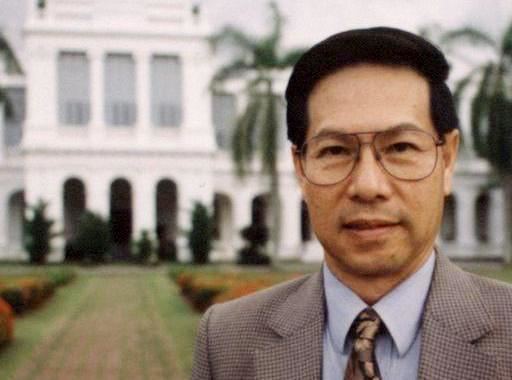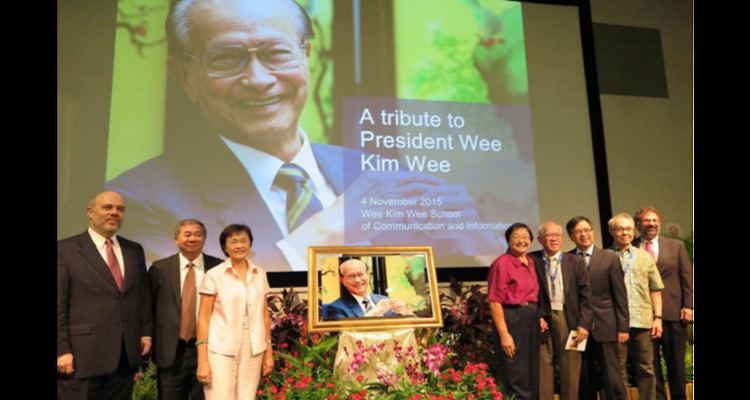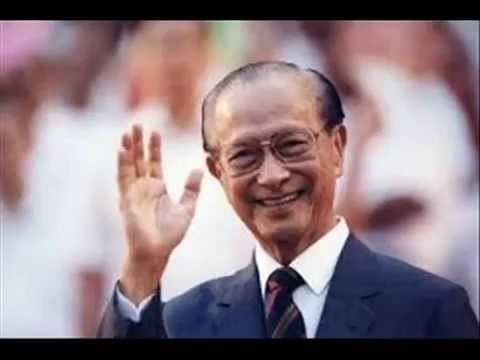Resigned September 1, 1993 | Name Wee Wee Ex-spouse Koh Sok Hiong | |
 | ||
Born 4 November 1915Singapore ( 1915-11-04 ) Resting place Mandai Columbarium200° Nationality Singaporean, Chinese (before 1922) Occupation Journalist, diplomat, politician Presidential term September 2, 1985 – September 1, 1993 Education Outram Secondary School, Raffles Institution | ||
Dr wee kim wee biography in tamil
Wee Kim Wee (simplified Chinese: 黄金辉; traditional Chinese: 黃金輝; pinyin: Huáng Jīn Huī; Pe̍h-ōe-jī: Ûiⁿ Kim-hui; 4 November 1915 – 2 May 2005), , was a Singaporean politician who served as the fourth President of Singapore. He worked as a journalist from 1945 to 1973 before he was offered the post of High Commissioner of Singapore to Malaysia by the government. He then served as Ambassador to Japan in September 1980 and also as Ambassador to South Korea in February 1981 before returning to Singapore in April 1984 and took up the position of Chairman of the Singapore Broadcasting Corporation. Wee was appointed as the President of Singapore in 1985 and was sworn in on September 1985, where he was in office for two terms until September 1, 1993.
Contents
- Dr wee kim wee biography in tamil
- Biography of wee kim wee
- Early life
- 1930 to 1973 Journalism
- 1973 to 1984 Diplomacy
- 1985 to 1993 Presidency
- Later years 19942004
- Death
- References

Biography of wee kim wee
Early life

Born in Singapore on November 4, 1915, Wee Kim Wee was the son of Wee Choong Lay, and his wife Chua Hay Luan. Wee Choong Lay was a ship purser but was blind when Wee Kim Wee was six years old. Wee Kim Wee lost his father when he was eight and his mother when he was nineteen. Wee received his primary education at Pearl's Hill School before enrolling in Raffles Institution for his secondary education. However, Wee did not complete his secondary education and dropped out after two years at the institution in January 1930.
1930 to 1973: Journalism
In 1930, Wee started out as a clerk working for the newspaper The Straits Times, before becoming a reporter focusing on political issues. He eventually became one of the paper's main reporters. In 1941 he joined the United Press Associations, and was its chief correspondent in the 1950s. He returned to The Straits Times in 1959, and was appointed deputy editor in Singapore. In 1963 he was awarded the Public Service Medal. In 1966, he interviewed the former Indonesian president Suharto, reporting the latter's intention to end the three-year confrontation with Malaysia (see Konfrontasi). He broke the news with a front-page headline using Suharto's own words: "Suharto: 'Peace: The sooner the better'". In 1973, he was awarded the Public Service Star as the editorial manager of the Straits Times.
1973 to 1984: Diplomacy
Wee retired in 1973 from journalism to become the High Commissioner to Malaysia, a position he held for seven years. He was then appointed ambassador to Japan in September 1980, and to South Korea in February 1981. At the end of his diplomatic career in 1984, he was appointed chairman of the Singapore Broadcasting Corporation – the predecessor of the current MediaCorp Studios.
1985 to 1993: Presidency
Wee became the President of Singapore in 1985, and was also appointed as the Chancellor of National University of Singapore during the same period. Until Wee's second term as President, the selection of the presidential candidate was determined solely by the Parliament of Singapore. During Wee's second term, the Singapore Parliament amended the constitution in January 1991 to allow for the direct election of the President, who could veto civil service appointments and the use of government reserves.
The creation of an elected presidency was a major constitutional and political change in Singapore's history as under the revision, as the President is empowered to veto government budgets and appointments to public office. He can examine the government's exercise of its powers under the Internal Security Act and religious harmony laws and investigate cases of corruption.
For the ensuing initial presidential election, the first in Singapore to be decided by popular poll, Wee decided not to enter his candidacy and went into retirement upon the completion of his second and final term as President. He was also awarded the Darjah Utama Temasek in 1993.
Later years (1994–2004)
After retiring from presidency, Wee was appointed as deputy registrar of marriages. He was then awarded the Doctor of Letters (honorary degree) by the National University of Singapore for his contributions to public service and his contributions to the University of Singapore as its chancellor till 1993.
In 2006, Nanyang Technological University renamed its School of Communication Studies after Wee to the Wee Kim Wee School of Communication and Information.
Wee became the Director of Cathay Organisation Holdings in 1999.
In 2004, Wee published his autobiography, Glimpses and Reflections. From the royalties and other donations, half a million Singapore dollars were donated to eight charities.
Death
Wee died of prostate cancer in his home at Siglap on 2 May 2005 at 5:10am SST at the age of 89. Before his death, he had asked to be cremated and for the ashes to be placed at Mandai Columbarium with those of ordinary citizens instead of Kranji War Cemetery, where late dignitaries are usually buried. His state funeral saw a large crowd who attended to pay their last respects at the Istana, where his body lied in state.
Wee was survived by his wife of 69 years, Koh Sok Hiong, their son Bill Wee Hock Kee, six daughters, 13 grandchildren, and 14 great-grandchildren.
The Wee Kim Wee Centre at Singapore Management University and Wee Kim Wee Legacy Fund at Nanyang Technological University are named after him.
